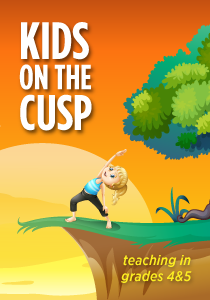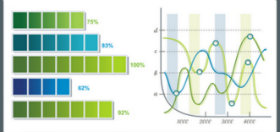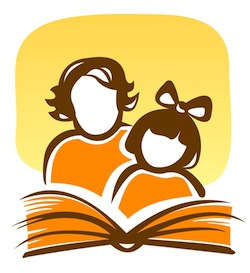Giving Parents Accurate and Honest Assessments
A MiddleWeb Blog

While attempting to utilize my less than stellar abilities with regard to typing numeric statistics, I can’t help but roll my eyes a bit and wonder, after all of the categories have been weighted and percentages calculated, what grade each of my students will receive.
The periodic grading process deserves an Incomplete

I have the freedom to change a computer-assigned “B” into an “A” and assign pluses and slashes, according to a range of subcategories. These categories don’t align with the CCSS, but they’re all I’ve got to work with as far as report cards go.
But no matter how many subcategories there are under each curriculum topic, none of them paint an accurate picture of who that child is or how they are doing, academically, emotionally, and socially. There’s a whole child who can’t be represented, authentically, on a written report.
Effective teachers are always looking for ways to authentically assess each child. The report card I will be sending home will not accomplish this. It will not be an authentic assessment. I am required, however, by the powers that be, to send it.
Authentic assessment, beyond the numbers
My version of authentic assessment takes place sitting face-to-face with parents and care givers at a table, sharing observations and insights about what I see in their child’s school life.

Authentic assessment, however, isn’t easy at times. Many observations and insights are difficult topics to discuss. Sometimes my assessment can be difficult to hear from across that table, but providing a truly authentic assessment means that the message must be accurate, honest, and come from my experience as their child’s teacher. These authentic conversations also give parents the opportunity to give me more information and insight into their child at home, a closer peek at the child I don’t see at school.
When I talk with parents and care givers
For the past few weeks, I have been perusing student files, files that contain the information I need to formulate an accurate picture of each learner. Other than percentages for accuracy in reading fluency, there are no statistics written in the notes that I prepare for my conversations with parents.
Talking about a child’s individual progress doesn’t mesh very well with statistics when you’re speaking person-to-person. Giving a narrative report, with examples of student work and anecdotal references, is the tool I use to prepare for authentic communication with my parents.
The lined, legal pad I jot my notes on, along with one black and one purple pen, help me break my student assessments into two main areas, Academic and Social/Emotional. Both play a vital role in student development and achievement.
What statistics can and cannot tell us
Some statistical components can be used in an authentic assessment of student academic growth. A child’s comprehension of math concepts and application of formulas, reading fluency and comprehension, and writing skills can be measured in averages and percentages. Sitting next to a child, working out an open-ended math problem, or just listening to them read and talking with them about it, on the other hand, show me much more.
Many other components of a child’s learning can’t be measured statistically – things like confidence, critical thinking ability, self-esteem, or the ability to empathize with others. How do we measure the success of working cooperatively, as a cohesive unit, within a learning community? How do we measure independence, as children develop into citizens of the world?

Reading, Writing, and Spelling have quantitative components as well. Applying proper sentence mechanics, editing for proper punctuation and capitalization, and using paragraphs are valuable pieces of data. They help me paint a realistic picture of where each child stands from an academic standpoint.
My concern is that the qualitative aspects of student growth and achievement do not appear on the results reported on any type of standardized tests.
Quantity vs. Quality
It is the qualitative data about individual students that is discussed during parent-teacher conferences. This data is subjective. It is my own personal measure of where each student was in September, and where each is today, as the marking period comes to a close. It focuses on the progress that has been made, identifies any roadblocks that may be preventing a child’s progress, and allows me to suggest a plan for growth academically, socially, and emotionally. This is my version of authentic assessment.
Certain things need to be discussed face-to-face, eye-to-eye, if we are to truly work collaboratively with home to recognize each child’s developmental reality, accepting them for who and where they are, and figuring out how best to move forward to assist these small citizens of our communities and the world.
Relating the hard truths to parents

When I share my experience as a mother and as a teacher, I am confident in my honesty, but honesty doesn’t make delivering a difficult message any easier to do.
Knowing how important it is to share what I see helps me say the hard stuff when I am looking at a mom who has tears in her eyes or a dad who just wants to “fix it.”
To be honest (pun intended), the most difficult part is looking them in the eye and making recommendations that I know their child needs, because I’m not sure if the ever-growing limits of our current public education system can meet those needs.
Communicating the hard truths to the education hierarchy

Maybe authentic communication (and a willingness to say the hard stuff) is the way to get us out of an imploding education system and lead us back in the right direction. It’s a good place to start.

































